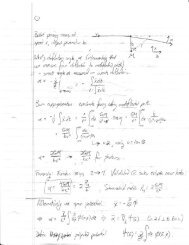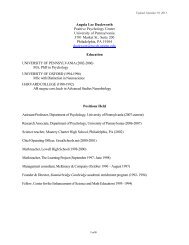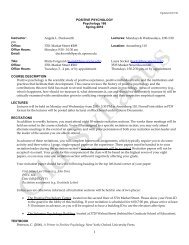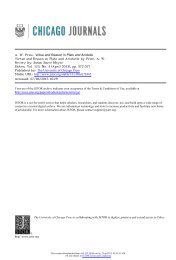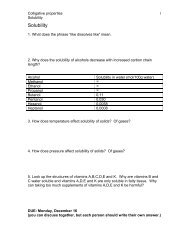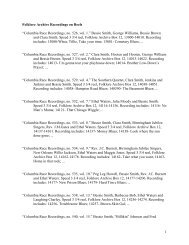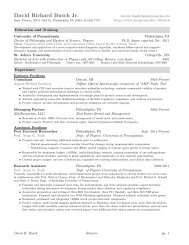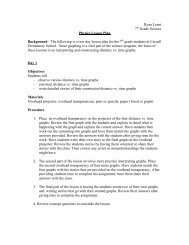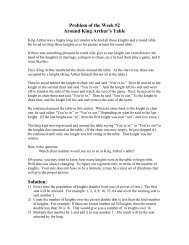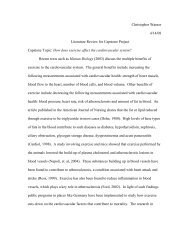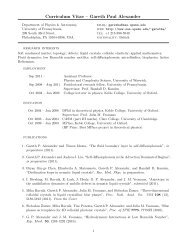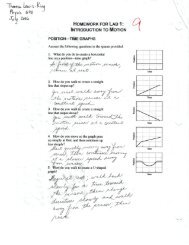Dusty Carroll Lesson Plan 4: Getting to know Lactase Background ...
Dusty Carroll Lesson Plan 4: Getting to know Lactase Background ...
Dusty Carroll Lesson Plan 4: Getting to know Lactase Background ...
Create successful ePaper yourself
Turn your PDF publications into a flip-book with our unique Google optimized e-Paper software.
o Tell groups <strong>to</strong> discuss what this means. Chemistry and biology students should have a<br />
different perspective <strong>to</strong> share with each other. Highlights should be:<br />
� Speeds a reaction<br />
• Necessary in the body because without enzymes, reactions would be <strong>to</strong>o<br />
slow<br />
� May interact with substrate but is not used up in the reaction<br />
• Substrate is the reactant that the enzyme works on<br />
� Lowers the activation energy<br />
• Provides a lower energy path for the reaction <strong>to</strong> begin, yet overall free<br />
energy of the reaction is not affected<br />
o Have groups write the overall reaction for the following:<br />
� “lac<strong>to</strong>se, a disaccharide, is broken in<strong>to</strong> galac<strong>to</strong>se and glucose by hydrolysis when<br />
the enzyme lactase is present”<br />
• Student reactions should match the reaction in the introduction. All of these<br />
structures are in any AP biology textbook and several AP chemistry<br />
textbooks. Students just need <strong>to</strong> make an equation out of it.<br />
• “lactase” should be written above the arrow; water and lac<strong>to</strong>se are the<br />
reactants; galac<strong>to</strong>se and glucose are the products; students should recognize<br />
the 1:1 s<strong>to</strong>ichiometry throughout the reaction.<br />
� Ask whether the reaction mechanism is obvious from this reaction (no).<br />
� Ask how a mechanism might be determined.<br />
• Only by experimentation<br />
• Determining the rate equations and rate constants<br />
• The exact mechanism for this process is under debate.<br />
o May be unimolecular or bimolecular<br />
� Chemistry students: explain <strong>to</strong> the bio students how this relates <strong>to</strong> the reaction order<br />
• For elementary steps, molecularity is the same as order (uni = 1 st order, etc)<br />
� Biology students explain <strong>to</strong> the chem. students how this relates <strong>to</strong> the enzyme and<br />
substrate<br />
• For a unimolecular reaction the rate depends only on the concentration of<br />
the substrate<br />
• For a bimolecular reaction the rate depends on the concentration of the<br />
enzyme and of the substrate<br />
• Summarize: More experimentation is necessary <strong>to</strong> determine the exact reaction mechanism for the<br />
lactase enzyme. This may be accomplished through kinetic studies similar <strong>to</strong> the basic kinetics we<br />
study at this level.<br />
Follow-up<br />
Complete “Putting it all <strong>to</strong>gether” sheet as a group. Each student should have the answers. Turn in the<br />
most legible copy.



